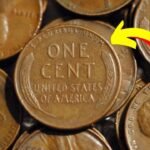It started like any other day. I came home from the grocery store, dropped my spare change onto the counter, and something unusual caught my eye—a quarter with a colonial drummer boy on the reverse side. Unlike the eagle design I’m so used to seeing on Washington quarters, this one had a charm all its own. I had stumbled upon a Bicentennial quarter. But could it be one of the rare Bicentennial quarters that collectors crave? Could it be worth more than its face value—possibly even thousands of dollars?
As it turns out, rare Bicentennial quarters are out there, quietly circulating among regular coins, hiding in piggy banks, pocket change, and forgotten drawers. These coins not only celebrate a historic moment in American history—the country’s 200th birthday in 1976—but they have also captured the imagination of numismatists and casual collectors alike. Some of them, due to unique minting errors, special compositions, or pristine conditions, are worth a small fortune.
Rare Bicentennial Quarters: A Symbol of Celebration
In the early 1970s, as America prepared to celebrate its 200th year of independence, the U.S. Mint decided to mark the occasion in a bold and inclusive way. Instead of creating a limited-edition collector’s item, the Mint redesigned the circulating quarter, half dollar, and dollar coins so that everyone—regardless of their background or economic status—could own a piece of the Bicentennial.
To achieve this, the U.S. Mint held a design competition in 1973. The winning design for the quarter came from Jack L. Ahr, who created the iconic image of a colonial drummer boy surrounded by 13 stars, symbolizing the original colonies. Every quarter minted in 1975 and 1976 bore the dual date “1776–1976” on the obverse, commemorating two centuries of American independence.
But here’s where things get even more interesting for collectors: although millions of Bicentennial quarters were minted, a small number fall into the category of rare Bicentennial quarters. These special coins are highly prized in the numismatic world, with some examples fetching values as high as $15,000—or even more under exceptional circumstances.
Minting and Variations That Matter
All Bicentennial quarters carry the dual-date “1776–1976,” but that’s where the similarities end. Understanding the different versions is key to identifying the rare Bicentennial quarters.
These coins were minted at three different locations:
- Philadelphia (no mint mark)
- Denver (marked with a “D”)
- San Francisco (marked with an “S”)
Philadelphia and Denver primarily produced clad coins for general circulation. San Francisco, on the other hand, minted special proof coins, including 40% silver versions meant exclusively for collectors.
There are two main types of Bicentennial quarters:
- Clad Coins: Made of copper-nickel, these were released into general circulation.
- 40% Silver Coins: These were only available through special collector sets from the U.S. Mint and were never intended to enter circulation.
Among these, the silver proofs and certain high-grade specimens qualify as rare Bicentennial quarters and command a significant premium on the market.
What Makes a Bicentennial Quarter Rare?
You may be wondering: with over 1.7 billion Bicentennial quarters minted, how can any of them be considered rare? The answer lies in a combination of factors:
- Minting Errors: Some rare Bicentennial quarters were struck with double dies, off-center images, or on the wrong planchet (a blank meant for another denomination). These mistakes can increase a coin’s value exponentially.
- Silver Composition: Coins with 40% silver content are automatically more valuable due to their metal composition and limited mintage.
- High Grade/Condition: A quarter in uncirculated or proof condition, especially with a top-tier grading like MS67 or PR70, can be significantly more valuable.
- Historical Significance: Unique provenance or historical context—such as being part of a ceremonial first strike—can increase its rarity.
High-Value Examples of Rare Bicentennial Quarters
Let’s take a look at some of the most valuable rare Bicentennial quarters ever documented:
- 1976-S Silver Proof Quarter (PR70): Graded at a perfect proof-70 condition, this coin has been known to sell for as much as $15,000.
- 1976-D Double Die Obverse: This error coin can fetch over $3,000 depending on its condition.
- Off-Center Bicentennial Quarters: If the strike was significantly misaligned, these coins have sold for over $2,000 at auction.
- Wrong Planchet Errors: A Bicentennial quarter struck on a nickel or dime blank can bring in upwards of $5,000.
- Pristine Condition Specimens with Historical Value: In rare cases, coins have reached values exceeding $2.5 million, though these tend to have exceptional circumstances attached to them.
How to Spot Rare Bicentennial Quarters
If you’re intrigued and want to check your own change for rare Bicentennial quarters, here’s a simple checklist to guide you:
- Mint Mark: Look for an “S” indicating a San Francisco mint, which could mean a silver proof.
- Color of the Edge: A clad coin will show a copper-colored edge. A 40% silver coin will have a solid silver appearance.
- Weight: Clad quarters weigh around 5.67g, while silver ones weigh slightly more at 5.75g.
- Errors: Use a magnifying glass to inspect the lettering and images for doubling, misalignment, or unusual details.
- Condition: The shinier and more flawless the coin, the higher its potential value. Uncirculated or proof coins are where the real value lies.
Preserving the Value of Rare Bicentennial Quarters
Once you find one—or suspect you might have—preserving it correctly is essential. Coin condition has a massive impact on value. Here are a few preservation tips:
- Handle with Cotton Gloves: Avoid direct skin contact as oils can tarnish the coin.
- Use Archival-Grade Coin Holders: These protect your coins from air, moisture, and scratching.
- Never Clean a Coin: Even light cleaning can diminish value by damaging the surface.
- Store in a Cool, Dry Place: Temperature fluctuations and humidity can corrode your coin over time.
Cultural Legacy of the Bicentennial Quarter
What makes rare Bicentennial quarters so special isn’t just their potential monetary value—it’s what they represent. These quarters serve as miniature time capsules, each one a reminder of the national pride and celebration that swept across the country in 1976. Millions of Americans—many for the first time—began to see coins as more than just currency.
For many, collecting these coins was a family tradition, often passed down through generations. Whether tucked into blue Whitman folders or displayed proudly in collector albums, Bicentennial quarters helped bring numismatics into mainstream American culture.
Growing Interest as America Approaches Its 250th
With the United States’ 250th anniversary approaching in 2026, numismatic experts are predicting a surge in interest in the original Bicentennial coins. As excitement builds around the upcoming semiquincentennial celebrations, collectors and history enthusiasts are beginning to revisit and reevaluate the coins from 1976.
The rare Bicentennial quarters, especially those in mint condition or with unique features, are expected to climb in value as this milestone draws nearer. If you have a few stashed away, now might be a good time to get them appraised.
Conclusion: A Piece of American History in Your Hands
Every time I come across one of these drummer boy quarters, I can’t help but think of the hands it’s passed through and the history it represents. Rare Bicentennial quarters are more than collectibles—they’re symbols of a nation’s pride, progress, and the power of commemorating milestones in a way everyone can access.
You never know—the next time you dig into your pocket, open a drawer, or search through an old coin jar, you might just come across one of the rare Bicentennial quarters. And if luck is on your side, it could be worth far more than just 25 cents—it could be a hidden gem with historical and monetary value.
FAQs About Rare Bicentennial Quarters
Q1: How do I know if I have one of the rare Bicentennial quarters?
Check for mint marks, errors, silver content, and overall condition. Silver quarters will have no copper stripe on the edge and weigh slightly more.
Q2: What is the highest price a Bicentennial quarter has sold for?
Some extremely rare Bicentennial quarters have sold for over $2.5 million, though these are exceptionally unique cases.
Q3: Are all Bicentennial quarters valuable?
No, most are worth face value. However, rare Bicentennial quarters with special characteristics can fetch thousands.
Q4: Where can I get my Bicentennial quarter appraised?
Look for certified coin dealers, numismatic shows, or grading services like PCGS and NGC.
Q5: Is it worth collecting Bicentennial quarters now?
Absolutely. With the 250th anniversary approaching, the value and interest in rare Bicentennial quarters are expected to rise significantly.
Some Important Link
| Telegram Group | Click Here |
| WhatsApp Group | Click Here |
| Home Page | Click Here |










